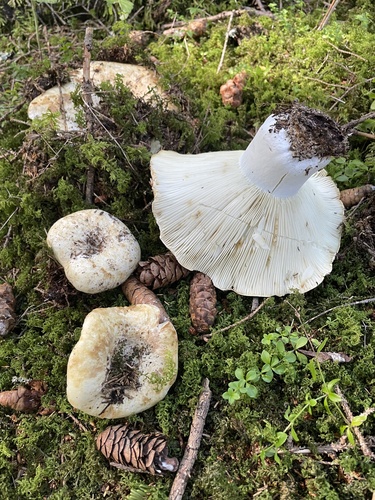Russula delica

Fungi Russula delica is an intriguing species commonly found in the Spanish region of Comunidad Valenciana, where it is also known as "rúsulas" or "llongueta." This species belongs to the large Russulaceae family, which comprises numerous kinds of brittle-gills and is easily recognizable by its distinct characteristics.
- Cap: The cap of Russula delica can grow between 6 to 20 cm in diameter. It is convex when young, gradually flattens out, and sometimes develops a slightly depressed center as it matures. The cap is typically white to cream, often with a slight brown or reddish tint due to soil contact.
- Gills: The gills are quite dense, white to pale cream, and can sometimes display a light brownish coloring towards the edges as the mushroom ages or in reaction to handling.
- Stipe (Stem): The stipe is sturdy, short, and generally thick in proportion to the cap. It is white and smooth, sometimes becoming hollow in older specimens.
- Flesh: The flesh of Russula delica is firm and white, although it may darken slightly as it ages or when exposed to the air. Its taste is considered mild or somewhat peppery.
- Habitat: This fungus tends to favor the Mediterranean ecosystems found in Comunidad Valenciana, often emerging in deciduous woodlands, particularly those with oak trees. It is known to appear from late summer to autumn.
Russula delica is not highly esteemed as an edible mushroom due to its somewhat acrid taste, but it is appreciated by some local mushroom foragers. Care should be taken to properly identify this species, as other white-capped fungi can be misleadingly similar and potentially harmful.






